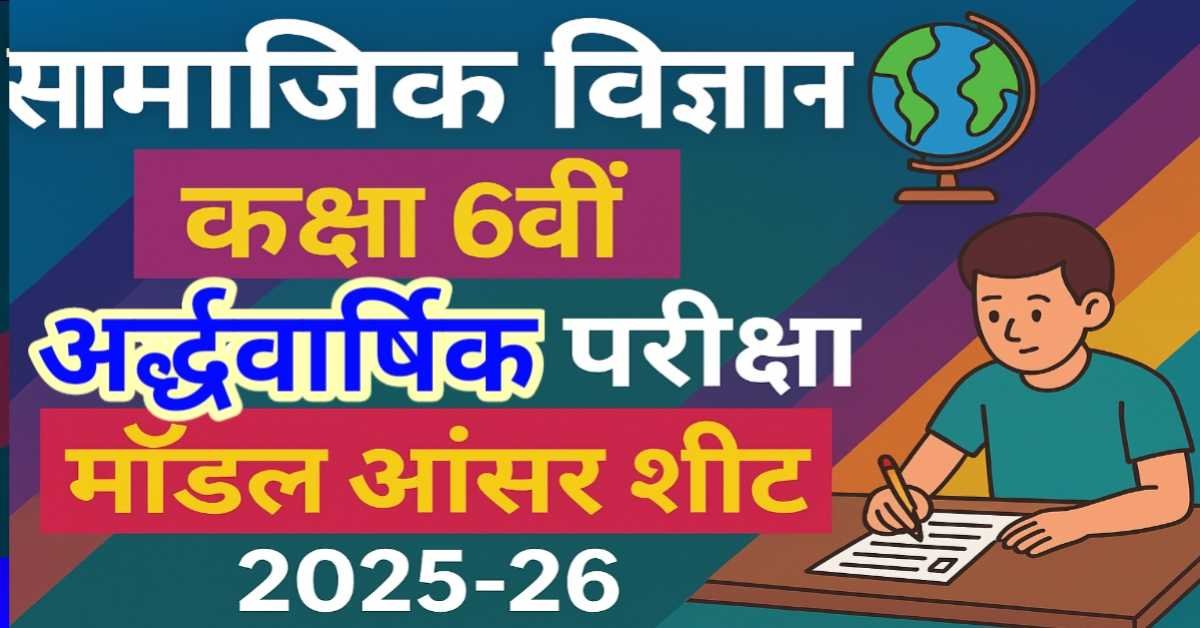
मानव विकास सूचकांक क्या है ? भारत की स्थिति What is Human Development Index (HDI) Status of India.
'Human National Development' should not only be measured not by per capita income but also by achievement in the fields of Health and education.This 'Human Development Index' is an underlying principle of HDI. This pioneering concept was introduced in 1990. It was written by Pakistani economist Mahbub Ul Haq was created at HDI.
एचडीआई के तीन मूल आयाम हैं:-
1. जन्म के समय जीवन प्रत्याशा द्वारा मापा गया स्वास्थ्य।
2. प्रति व्यक्ति सकल राष्ट्रीय आय (जी.एन.आई.) द्वारा मापा जाने वाला जीवन स्तर।
3. वयस्क आबादी के बीच शिक्षा के वर्षों के हिसाब से शिक्षा का स्तर तथा बच्चों के लिए स्कूली शिक्षा के अपेक्षित वर्ष।
HDI has three basic dimensions :-
1.Measured by life expectancy at birth health.
2. Life measured by per capita gross national income GNI level.
3. The level of education according to the years of education among the adult population and the axpected years of schooling of children.
एच.डी.आई. विभिन्न देशों के विकास स्तरों की तुलना करता है। यह समय के साथ मानव विकास के स्तर में आए बदलावों का अनुसरण करता है। इसके द्वारा मानव प्रगति में पिछड़े समूह की पहचान की जाती है।
HDI compare development levels of different countries. It follows changes in the level of Human Development over time. By this a backward group in human progress is identified.
मानव विकास आयामों में से गरीबी, असमानता तथा लैंगिक सशक्तिकरण की निगरानी के लिए तीन सूचकांक प्रारंभ किए गए थे। ये सूचकांक वर्ष 2010 से प्रारंभ हुए थे। ये निम्नलिखित हैं:-
Among the Human Development dimensions 3 indices were introduced to measure poverty, inequality, and Gender Empowerment. These indices started from the year 2010. These following are-
1. बहुआयामी गरीबी सूचकांक (एमपीआई)।
(Multidimensional poverty index) MPI
2. असमानता- समायोजित मानव विकास सूचकांक (आई.एच.डी.आई.)।
(Inequality adjusted Human Development Index) IHDI
3. लैंगिक असमानता सूचकांक (जी.आई.एफ.)।
(Gender Inequality Factor) GIF
वर्ष 2014 में 'जेंडर डेवलपमेंट इंडेक्स' (जी.डी.आई.) की शुरुआत की गई थी। संयुक्त राष्ट्र विकास कार्यक्रम (यू.एन.डी.पी) द्वारा मानव विकास सूचकांक एच.डी.आई. 2019 जारी किया गया। इस सूचकांक में कुल 189 देशों को शामिल किया गया था। इन देशों में भारत का स्थान 129 वाँ है। इससे पूर्व वर्ष 2018 में भारत का स्थान 130 वाँ था। भारत ने अपनी स्थिति में एक स्थान का सुधार किया है।
The gender development Index (GDI) was launched in the year 2014 'Human Development Index' (HDI) by United Nations Development Programme (UNDP) 2019 released. A total of 189 countries were included in this index. India rank 129th among these countries. Earlier in the year 2018 India was ranked 130. India has improved its position by one place.
इस सूचकांक में शीर्ष स्थान पर नार्वे, स्विजरलैंड, आयरलैंड, जर्मनी और ऑस्ट्रेलिया हैं। सूचकांक में सबसे निचले पायदान पर क्रमशः नाइजर, दक्षिण अफ्रीकी गणराज्य, दक्षिण सूडान, चाड एवं बुरुंडी हैं।
Norway, Switzerland, Ireland, Germany and Australia topped the index. Niger, South Africa Republic, South Sudan, Chad and Burundi are in the bottom of the index respectively.
भारत के पड़ोसी देशों में श्रीलंका 71 वें, चीन 85वें, भूटान 134वें, बांग्लादेश 135वें, म्यांमार 145 वें, नेपाल 147वें, पाकिस्तान 152 वें और अफगानिस्तान 170 वें स्थान पर हैं।
Among India's neighbours Shrilanka ranks 71st, China 85th, Bhutan 134th, Bangladesh 135th, Myanmar 145th, Nepal 147th, Pakistan 152nd and Afghanistan 173th.
भारत के एच.डी.आई वैल्यू में 50% तक की वृद्धि हुई है। वर्ष 1990 में यह वैल्यू 0.431 थी जो बढ़कर वर्ष 2018 में 0.647 हो गई। भारत सहित दक्षिण एशिया वर्ष 1990 से 2018 के बीच विश्व में सबसे तेज गति से विकास करने वाला क्षेत्र बन गया है। इस अवधि में एफ.डी.आई के संदर्भ में दक्षिण एशिया में 46% वृद्धि हुई है। जबकि पूर्व एशिया और प्रशांत क्षेत्र में 43% की वृद्धि दर्ज की गई। एफ.डी.आई में स्कूली शिक्षा के अपेक्षित वर्षों की संख्या 12.3 वर्ष आंकी गई है किंतु भारत में स्कूली शिक्षा के औसत वर्षों की संख्या 6.5 वर्ष बताई गई है। भारत के संदर्भ में इस स्थिति में सुधार की आवश्यकता है। 0.647 अंकों के साथ भारत को मध्यम मानव विकास वर्ग में रखा गया है।
India's HDI value has increased by up to 50% in the year 1990, this value was 0.431 which increased to 0.647 in the year 2018. South Asia including India, has become the fastest growing religion in the world between 1990 and 2018. In this period, South Asia has grown by 46% in terms of FDI. While East Asia and Pacific region recorded a growth of 43% the the expected number of years of schooling in FDI is estimated at 12.3 years, but the average number of years of schooling in India is stated to be 6.5 years. In the context of India, this situation needs improvement. India is planned in the middle Human Development category with a score of 0.647.
लैंगिक असमानता सूचकांक (जी.आई.आई) भी जारी किया गया है। इसमें कुल 162 देशों को शामिल किया गया था। इसमें भारत का स्थान 122 वाँ है। पड़ोसी देशों के विषय में बात की जाए तो श्रीलंका 86 वें, भूटान 99 वें और म्यांमार 106 वें स्थान पर हैं। ये सभी भारत से बेहतर स्थिति में हैं।
The Gender Inequality Index (GII) has also been released a total of 162 countries were included in this India ranks 122nd in this. Talking about neighbouring countries Shri Lanka 86th, Bhutan 99th, and Myanmar 106th. All of them are in better condition than India.
भारत में मानव विकास असमान रूप से वितरित है। मानव विकास में असमानता देश की प्रगति के लिए गंभीर चुनौती है। मानव विकास में असमानता उग्रवाद को बढ़ावा दे सकती है। यह सामाजिक संस्थानों और नीतियों की गुणवत्ता पर प्रतिकूल प्रभाव डाल सकता है। यह समग्र समानता उच्च मानव विकास श्रेणी से मध्यम मानव विकास श्रेणी तक की गिरावट को प्रदर्शित करता है। यह असमानता निम्न मानव विकास वाले देशों में व्यापक रूप से फैली हुई है। यहां महिलाओं का एचडीआई मान पुरुषों की तुलना में कम है। उच्च मानव विकास वाले देशों में जीवन प्रत्याशा निम्न मानव विकास वाले देशों की जीवन प्रत्याशा की अपेक्षा अधिक है। जलवायु परिवर्तन में उच्च एचडीआई वाले देशों का अधिक योगदान है।
Human Development is the unevenly distributed in India. Inequality in Human Development is a serious challenge for the progress of the country. Inequality in human development can promote extremism. This can adversely affect the quality of social institution and policies. This overall similarity exhibits a decline from the Human Development category to the Medium Human Development Category. This inequality is widespread in countries with low Human Development. Here the HDI value of women is lower than that of men. Life expectancy in countries with high Human Development is higher than life expectancy in countries with low Human Development. Countries with high HDI contribute more to climate change.
RF competition
INFOSRF.COM
🇮🇳🇮🇳🇮🇳🇮🇳🇮🇳🇮🇳🇮🇳
उपरोक्त जानकारी से संबंधित pdf नीचे स्क्रॉल कर देख सकते हैं। यदि आप डाउनलोड करना चाहें हैं तो Download pdf के हरे बटन पर क्लिक कर डाउनलोड कर सकते हैं।👇
Download PDF (doc1) संबंधित जानकारी नीचे देखें।
(Watch related information below) 👇🏻

आशा है, उपरोक्त जानकारी उपयोगी एवं महत्वपूर्ण होगी।
(I hope the above information will be useful and important. )
Thank you.
लेखक
(Writer)
infosrf.com








(Teacher)
Posted on January 12, 2021 04:01PM from ,
yes it is too